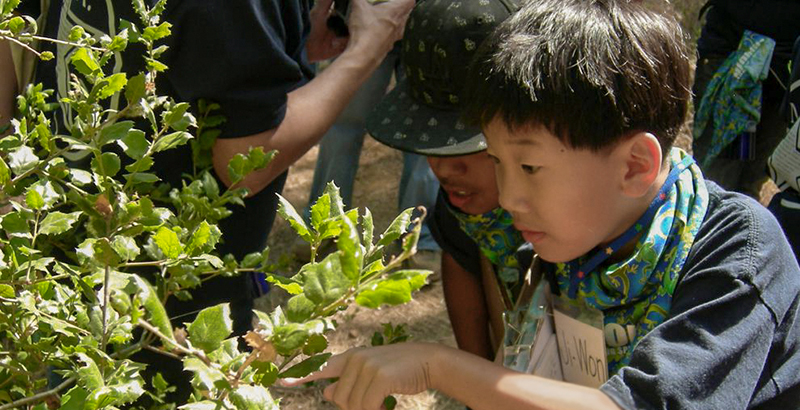Current Events, Science, Politics — National Geographic Opens Up Learn-at-Home Resources for Grades K-12. 2 Students Check Them Out

School closures prompted by the COVID-19 epidemic have pushed many a parent to scour online for help in keeping their children both engaged academically and, well, engaged. But sifting through the mountains of available online resources can overwhelm even trained teachers looking to assist students, let alone parents unaccustomed to sorting out a daily academic schedule. The 74 Million recently put out an easy-to-understand guide listing some of the most accessible resources available, but we then decided to take a look at how one of those suggested resources, National Geographic, is taking its catalog of free online resources and making it home-learning-friendly, all while adding to its offerings.
“Our goal is to provide a curated set of collections,” says Vicki Phillips, National Geographic’s executive vice president and chief education officer. That includes NatGeo’s new Learn at Home landing page — no password required — which aims to bring various resources across age groups and topic areas into one location. With a newfound focus on organization, parents can view a curated collection accessible by three grade sections — K-2, 3-5 and 6-12 — and a few popular NatGeo series offerings, such as the Citizens Science and Infectious Agents collections.
There’s some new stuff, too.
Ashley Lamb-Sinclair, a NatGeo fellow, has created a platform dubbed The Real Time Curriculum Project, a series of learning units based on relevant current events. The first, fittingly, is about coronavirus.
There are also real-time Explorer Classrooms. Every weekday at 2 p.m. Eastern, the company’s YouTube channel comes to life, connecting students with scientists, researchers and other role models showing how they solve problems. The goal is to give kids an explorer mindset and an opportunity to interact. NatGeo has done this live event sporadically in the past but is now committed to it five days a week for as long as schools remain closed. Topics can range from how to engineer a critter camera to protecting the ocean. Phillips says Spanish-speaking scientists are included in the upcoming schedule, and she expects the topics to be archived for viewers who miss the live broadcast.
“We are continually getting feedback on what is most popular, what is working and what is not,” Phillips says. “We will continue to explore online possibilities, but we know they are especially important now and will be building on this in the coming weeks. We want to give students an explorer’s mindset, where they have content knowledge but also critical problem-solving skills they need and that level of open-mindedness that explorers demonstrate.”
From a student perspective
National Geographic’s efforts all sound great. But what do students think?
A pair of female students, one in sixth grade and one in eighth grade, volunteered to explore the site on their own, with minimal parental interaction. They started at the Learn at Home page and got lost in it immediately.
The Real Time Curriculum Project, the new platform, included a wealth of information to teach about the coronavirus, everything from simulations to articles. The students weren’t drawn to it and felt overwhelmed by both how to navigate the site and what to do, but with some direction from a parent or educator, the information could prove valuable.
The Learn at Home resources range from articles to online interactive simulations to Citizen Science, which includes Backyard Bioblitz and iNaturalist explorations that encourage students to get outside. While both students were intrigued by the Citizen Science aspect, which Phillips says is one of the most popular parts of the online resources, a stay-at-home order coupled with spring rain kept the girls inside.
The eighth-grader quickly landed on the Win the White House section, an interactive model in which you pretend you are running for president. She says that being able to pick topics, “political things,” you want to discuss, figuring out what you want to say in a debate and learning about how to poll, fundraise, visit states and even select a vice president got her hooked. She had a parent-mandated minimum time put on her exploration of the site, and she easily doubled that just in the White House experience.
“I have not enjoyed politics [before],” she says, “but this made me more aware and interested. I don’t know how realistic it was, but it was fun.”
Having similar interactive opportunities for learning how to run a farm, about being part of Congress or about food were next on her exploration list.
The sixth-grader easily lost herself within the site, hugely entertained and having fun exploring. She put the Backyard Bioblitz on her to-do list for when she had more time in the sunshine and then did some online engineering modeling in which she learned about loading a trailer with the right amount of weight.
“I am doing one right now where there is a robot,” she says, “so I learned about the parts of a robot and I get to play this game where you sort items and customize the robot and direct it to move around obstacles.” She even printed out an employee ID badge as part of the learning exercise and then needed to virtually build the robot to accomplish a task, including retrieving trash from an ocean or navigating a cave to retrieve artifacts. “If you don’t customize the robot the right way to accomplish your task, you fail and have to go back and make changes,” she says. It was learning she was hooked on.
Get stories like these delivered straight to your inbox. Sign up for The 74 Newsletter

;)
